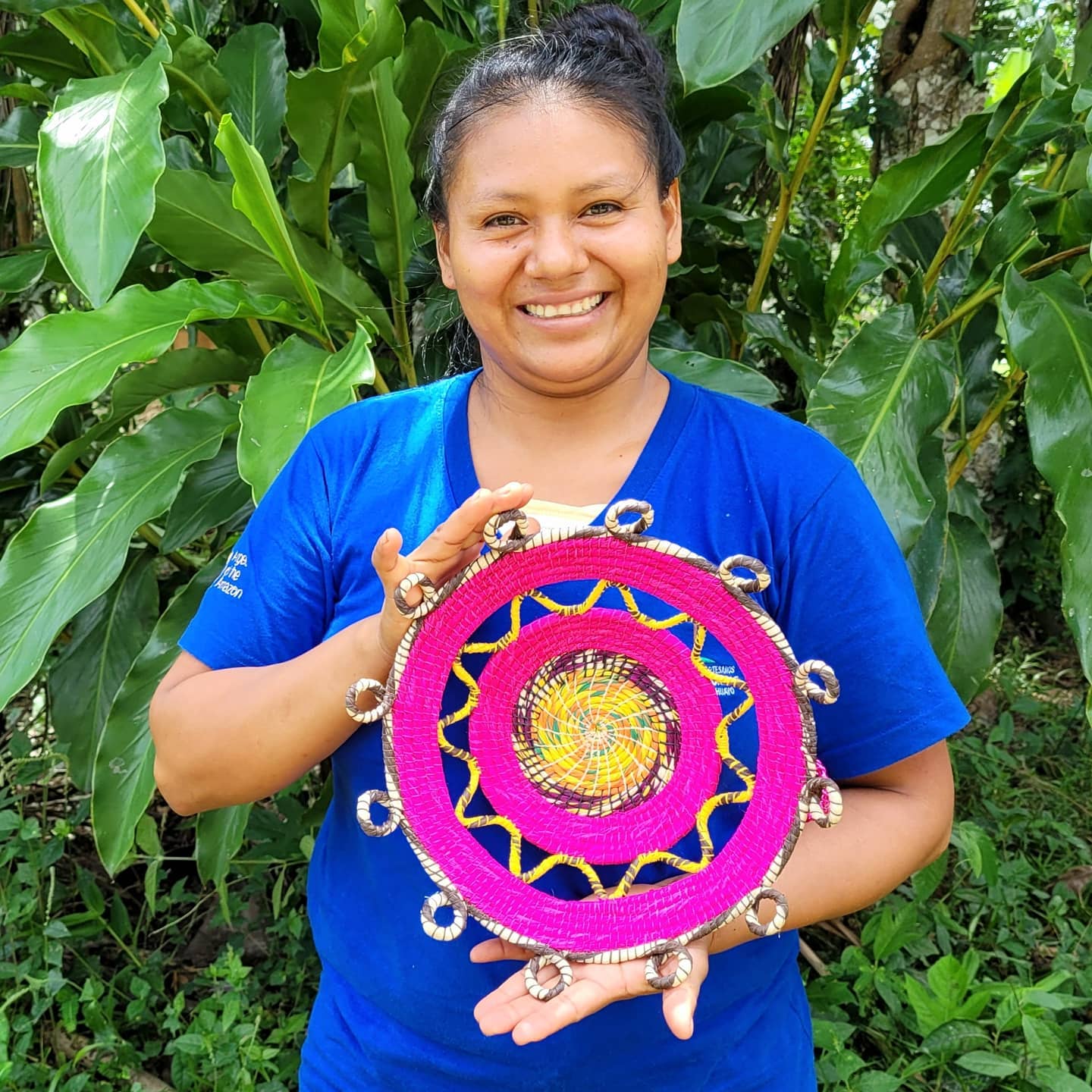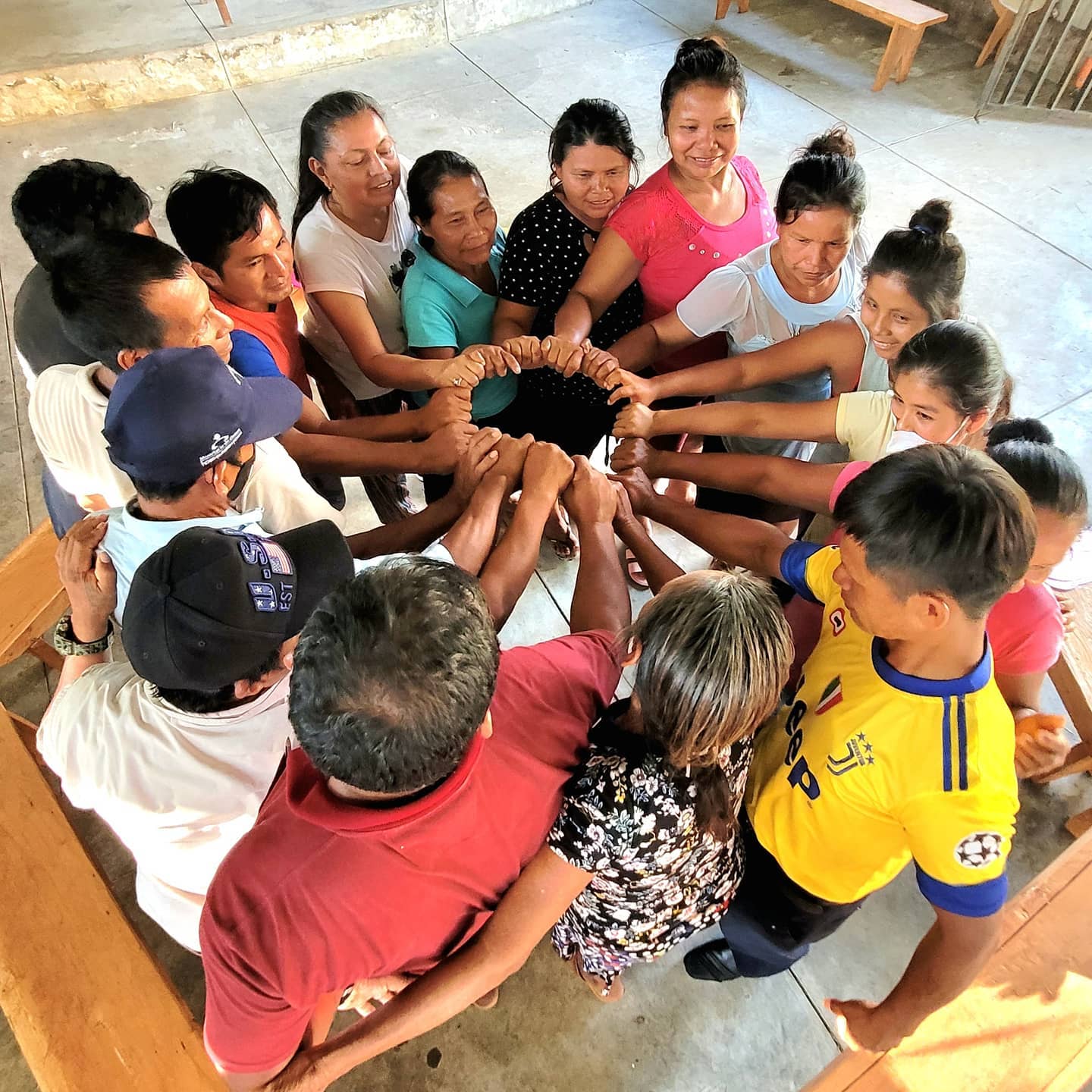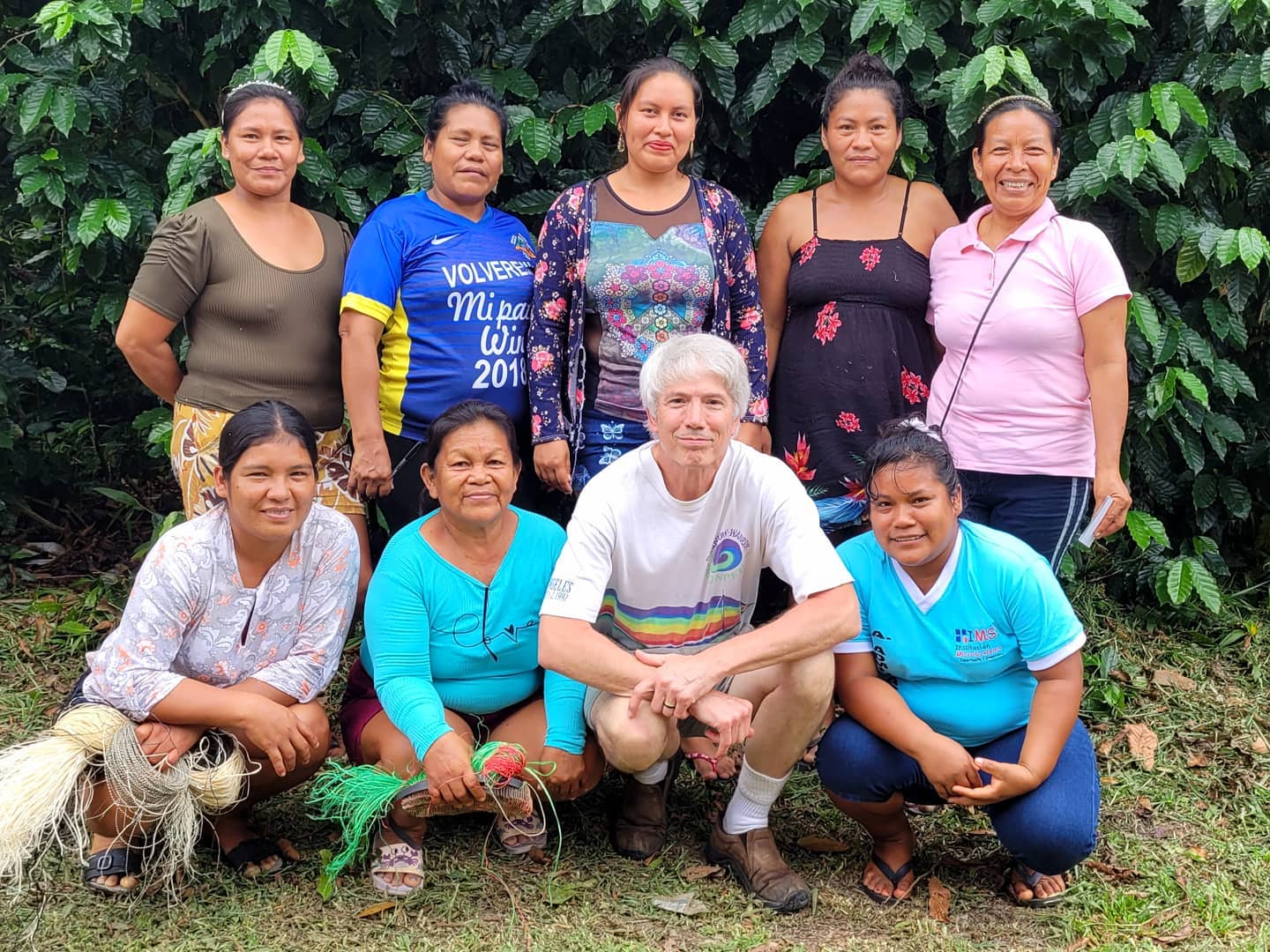Story and photos by Campbell Plowden, Executive Director, Amazon Ecology
THE PUBLIC MARKET AT PUERTO LAU
My next trip was a visit to the community of Chino on the Tahuayo River. To get there, I first went to Puerto Lau in Iquitos where rapidos (long speed boats) depart for the town of Tamshiyacu. From there, I would board a small lancha to go the rest of the way to Chino. The short block separating the main street from the staircase descending down to the docks was lined with vendors on both sides.
After stowing my big bag on the boat, I came back up to capture some of the colorful images of fruit (papaya, platanos, oranges, camu camu and humari), vegetables (onions, cucumbers, and cilantro), meat (chicken, dried paca, and fresh tortoises), fish and bihao leaves used both to cook fish (in patarashca) or wrap juanes (a rounded pyramid with savory rice and bits of meat) and the people selling them. It was a quick foray since my rapido was filling up, and I didn’t want to spend much time in this environment packed with people quickly hauling large bunches of platanos and pallets of soda bottles through the narrow path between the vendors.
Less picturesque aspects of the scene were the abundance of garbage discarded under the staircase and into the river between the floating docks.

THREE BOATS TO TAMSHIYACU
The fastest way to travel up the Amazon River from Iquitos to the town of Tamshiyacu are “rapidos” that carry 20 to 30 passengers on roughly padded seats in one hour for about $7. Each rapido departs after filling up. This can be quick in the morning but may take an hour later in the day. “Pongeros” are long narrow boats that pack 100 or more passengers side by side on wooden benches. They charge about $4 for a 2 to 4 hour ride and leave every 3 hours or so on a schedule.
When Tulio, Andrea and I reached the Puerto Lau dock, we boarded a pongero due to leave in 20 minutes. It was slow, but we still got to Tamshiyacu well before the lancha to Chino. I ate a leisurely lunch until I remembered I had forgot a photocopy of my passport to give the police at the reserve entrance near Chino. I ran up to the town, finally found one family bodega open with a working copy machine, and hustled back to the port in a motorcar.
The lifeline for people along the Tahuayo River are two small lanchas that travel between Iquitos and the village of Chino. These vintage double-decker wooden boats have a legal passenger limit of 80, but they often carry two to four times as many on benches and hammocks. It takes 4 to 6 hours to reach Tamshiyacu and another 6 hours or so to reach Chino. While the rapidos and pongeros are express boats that are loud and anonymous, the lanchas are slow and social. They stop at any community or family settlement on the Tahuayo River where someone wants to get on, get off or load cargo on the craft. They are much heavier going toward Iquitos because they are laden with bananas, fish, charcoal and other produce being taken to market in the city.
It was not surprising that Andrea met two artisans from the communities of Santa Cruz and Esperanza who she knows from her craft enterprise Baraka. I was happy to meet them and discuss ideas for doing some craft training and/or purchases with Amazon Ecology and Garza Viva. We got to the end of the line at Chino after dark and disembarked with only a handful of other passengers ready to begin our next mission.

SHIFTING TIDES IN CHINO
It was a joy to meet the artisans from Chino who had a functioning association when I first visited their campesino community on the Tahuayo River in 2008. They made top-quality baskets and were practicing good chambira management. I had visited them on behalf of Amazon Ecology every year since then to buy crafts, sponsor training workshops, and support health, education and conservation needs in their community. The artisans have always treated me with respect and affection, but I felt our relationship with their group was sliding and wanted to see where things stood.
We met as usual in the house where they host their craft fairs. While the number of tourists visiting the village is still small, Dolly (Amazon Expedition’s owner) was buying some crafts directly. A successful former community resident had built a new lodge and installed a water system to reach every house. One NGO recently upgraded their solar power system.
The artisans confirmed they did not want any more trainings to make woven animals. They would welcome support for chambira reforestation but showed little interest in communications workshops since Dolly was doing social media for them. One idea with a spark was making better chambira earrings with help from their former leader Estelita who had pushed herself to make high-quality designs.
Next came a tough discussion about baskets. I understood they needed to raise prices on some models with expensive wooden beads, but I said we would need a discount to keep buying larger numbers of crafts. We finally reached an agreement but when we shifted to the craft fair, some artisans were already not happy with it. We, nonetheless, completed our ritual of taking photos of artisans who made the crafts we would sell in the US and our store in Iquitos.
I placed an order the next week for some earrings and baskets so we’ll see how it goes. I feel sad with this shifting tide, but I understand that artisans who can sell as much as they want to make to retail customers have little short-term incentive to sell their crafts for less to a wholesale buyer.





